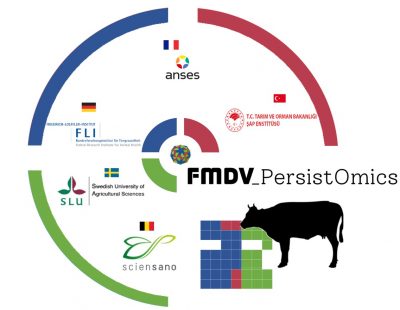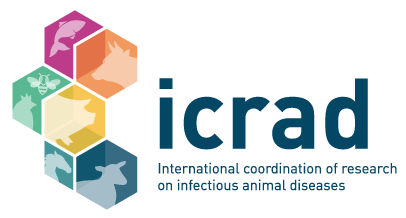Project details
Acronym: FMDV PersIstOmics
Researcher: Dr Sandra Blaise-Boisseau
Countries: France, Belgium, Germany, Sweden, Turkey
Website: jouy.inrae.fr

Project Summary
Foot-and-mouth disease (FMD) is one of the most important and devastating contagious viral diseases of cloven-hoofed livestock with severe global socio-economic impact. The etiological agent, foot-and-mouth disease virus (FMDV) belongs to the genus Aphthovirus within the Picornaviridae family. FMDV, which spreads rapidly in susceptible animal populations, is highly diverse with seven distinct serotypes and multiple lineages and subtypes.
More than 50% of ruminants that had been exposed to FMDV, even those in which prior vaccination has prevented clinical disease, will carry the virus in the nasopharynx for a prolonged period, which is referred to as persistent infection or the “carrier state”.
Carriers are often considered a potential source of infectious virus and represent an impediment for international trade. Fear of contagion from carrier animals is a major obstacle for the implementation of vaccinate-to-live policies for FMD control in free countries. Even after decades of research, themechanisms underlying FMDV persistence are still largely unknown. Investigations performed so far suggest that the maintenance ofpersistent infection is mainly related to the host’s immune responses. Filling the gap of knowledge regarding the carrier state is critical to be able to predict, prevent, detect or cure FMDV persistence and put an end to the mass culling of exposed animal populations during outbreaks of the disease in free areas.
In a previous collaborative EU funded project (ERA-NET/ANIHWA “Transcriptovac”), we have established a new in vitro model of FMDV persistence in primary bovine dorsal soft palate (DSP) cells cultured as multilayers at an air-liquid interface (ALI) without any cell culture passage, to mimic in vivo conditions. The combination of proteogenomics with the DSP ALI model allowed us to analyse the transcriptional host response during acute and persistent FMDV infection. In this near-natural in vitro model, we identified time-dependent gene signatures during FMDV infection and found that a long-lasting stimulation of interferon indeed stimulated antiviral genes (ISG) along with persistence but is ultimately ineffective to clear the virus. Some highly regulated genes, which have potential use as diagnostic markers of persistence, were also identified during this study.
The project proposed here is a direct follow-up to determine mechanisms and factors that may help to prevent or control persistent infection and to improve diagnostics. The project aims to (i) uncover alterations of the host response during persistent FMDV infection of cattle (ii)evaluate genes highly regulated during FMDV persistence as candidate host markers of persistent infection and (iii) identify pathways that could be targeted to prevent the establishment of FMDV persistence or terminate the infection.
